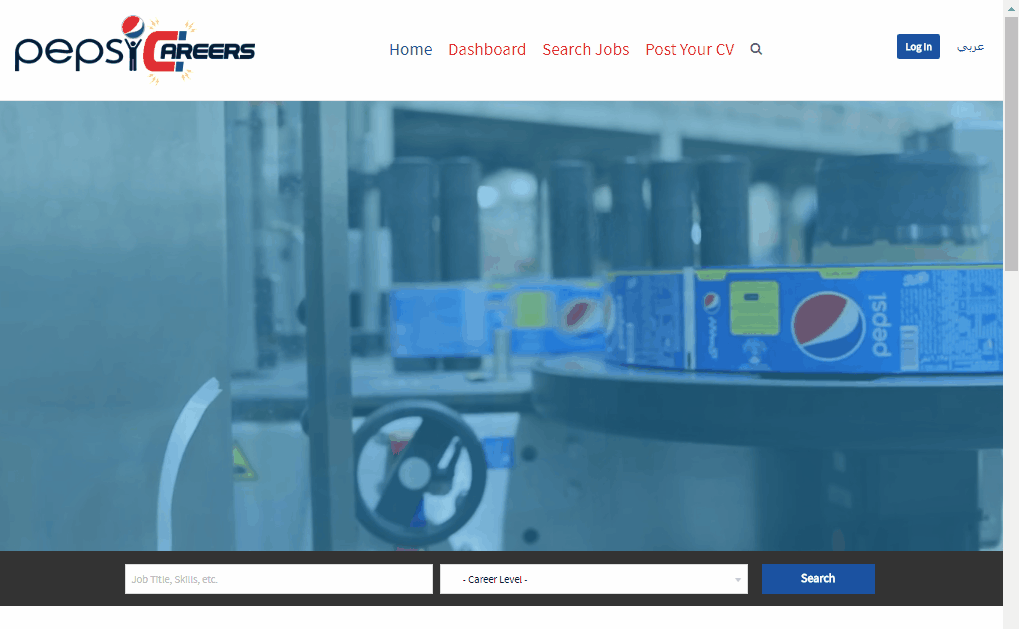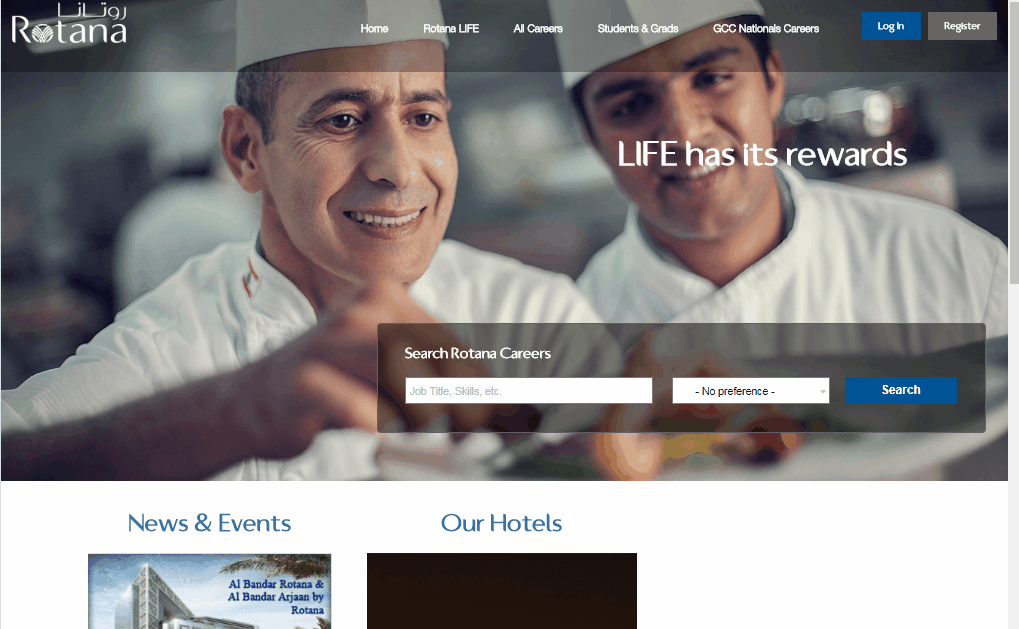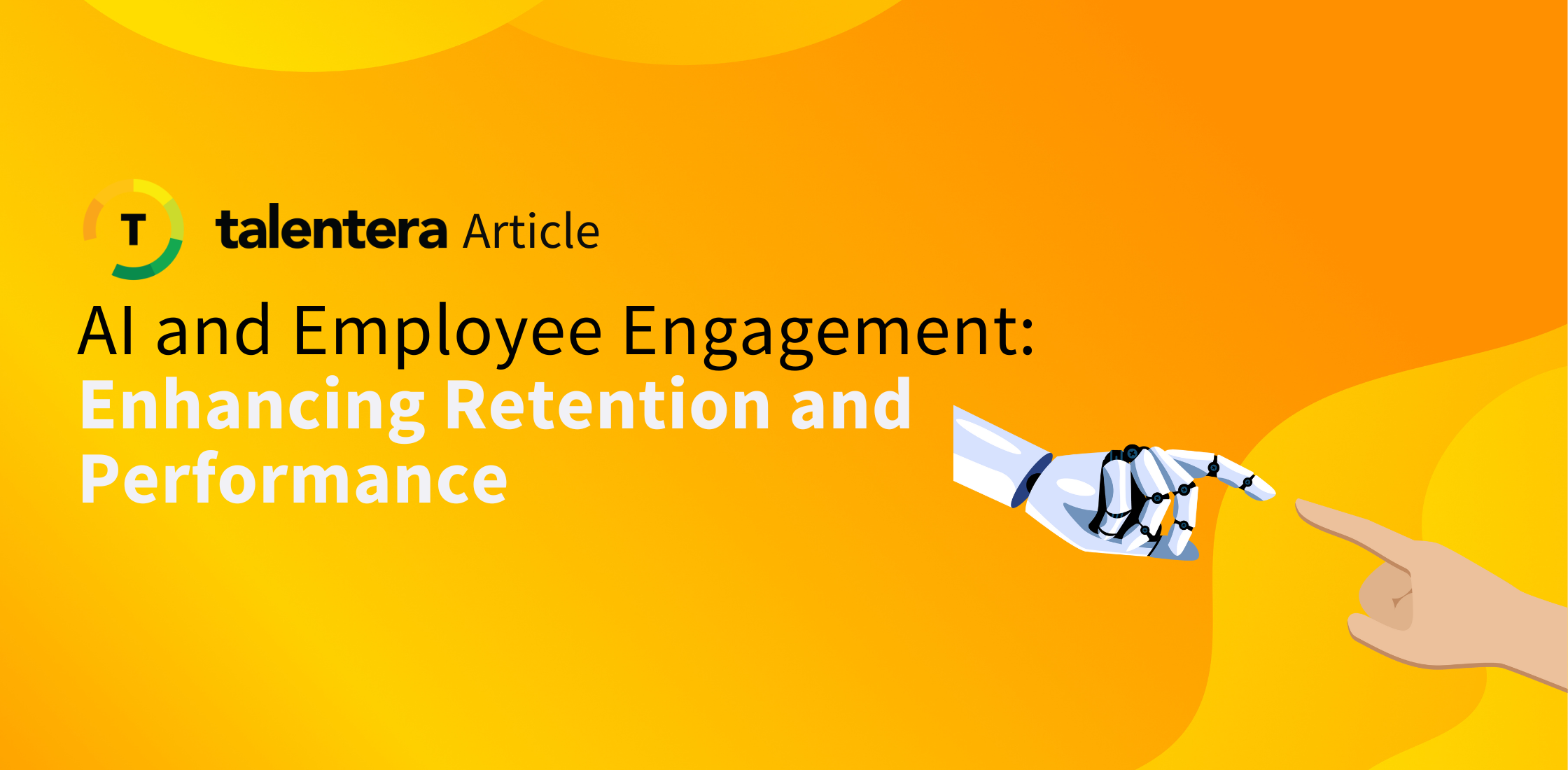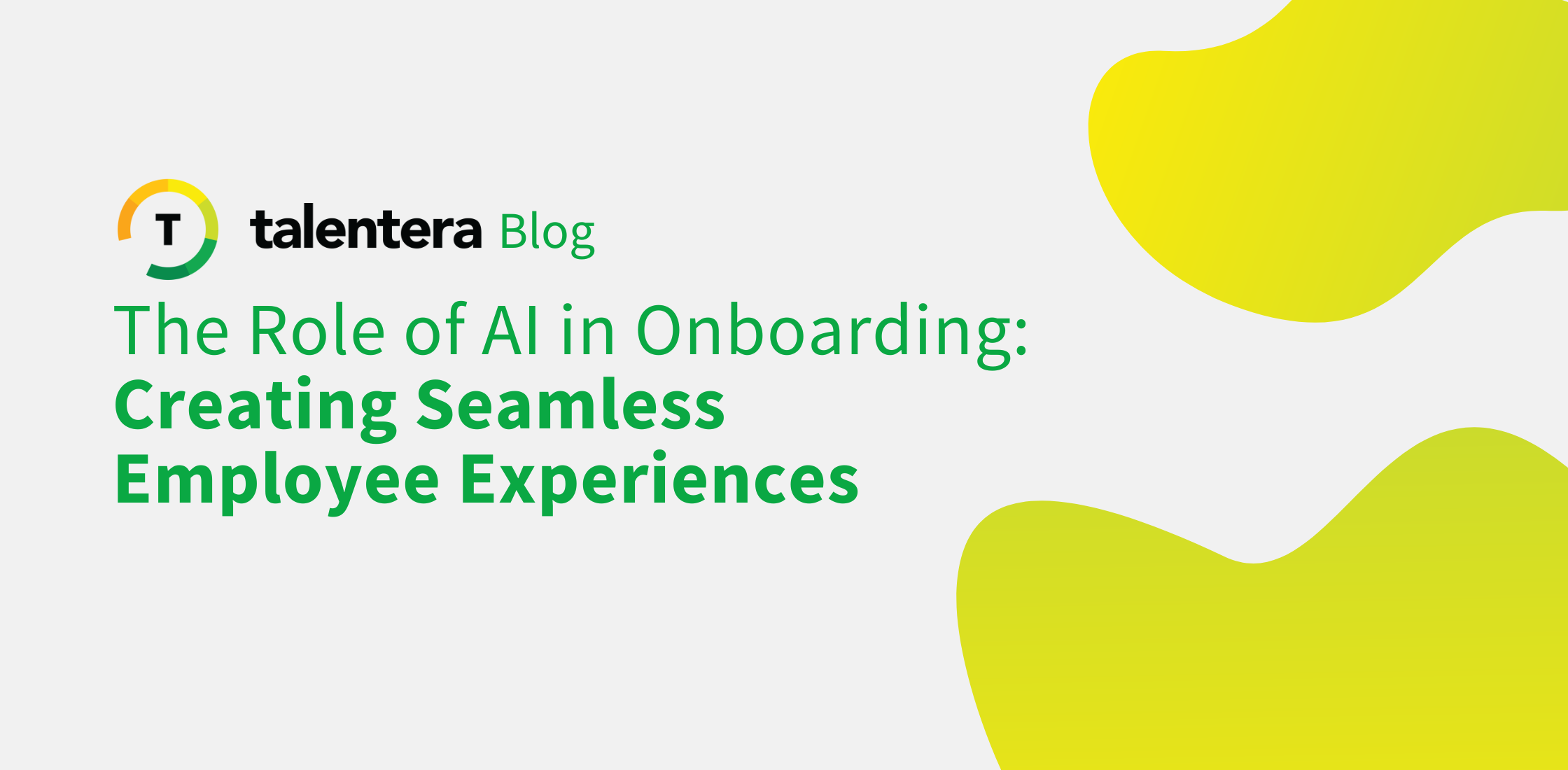The hiring process has drastically changed over the past few years. Remember the days of paper based CVs, stacks of applications waiting to be reviewed, and no clear solution for shortlisting best talent? Not the fondest of memories for recruiters to visit down the memory lane until technology worked its magic to change hiring strategies all altogether (*insert relief here*).
Offering supercharged productivity, lightening like efficiency, and incredible ease to remain competitive, organizations now have powerful tools to win the war for talent. We’ll focus on our three favorite that offering maximum advantages, automation, and visible improvement in day-to-day processes, get ready to meet your team of essential recruitment assets:
1) Applicant Tracking Systems:
Commonly referred to as an “ATS”, this is a centralized database that makes sourcing, tracking and managing candidates simple, quick, and collaborative. Adding much needed organization, security, and the ability to take an in-depth look at your talent pool to identify relevant skill sets, tasks that once took hours can now be executed in merely minutes.
Working round the clock to amplify employer branding, improve candidate experience, and making job applications very convenient for prospects to submit, this is a technology solution that can transform your hiring and find brilliant future employees all with the click of a button.
2) Video Interviewing:
 So you’ve find your future superstar, and can’t wait to have an interview to assess if they’re a good fit for your business needs, corporate culture, and team’s personalities. New talent acquisition technology has made video interviewing a great tool to truly cut to the chase, and speed up hiring decisions. Saving time and money for interviewing organizations and candidates alike, hiring managers no longer need to rely on phone calls to connect with talent, or pay huge bills to fly in out of city prospects for interviews.
So you’ve find your future superstar, and can’t wait to have an interview to assess if they’re a good fit for your business needs, corporate culture, and team’s personalities. New talent acquisition technology has made video interviewing a great tool to truly cut to the chase, and speed up hiring decisions. Saving time and money for interviewing organizations and candidates alike, hiring managers no longer need to rely on phone calls to connect with talent, or pay huge bills to fly in out of city prospects for interviews.
3) Employee Onboarding:
Once you’re done conducting your interview and have reached a conclusion, helping your newly recruited talent with seamless onboarding is extremely important. Enabling organizations to have arrangements in place before the employee’s first date of joining, this technology is known to increase retention, engagement and nurture brand ambassadors to attract the brightest of future talent.
Making planning and organizing a breeze- your HR division benefits from automated workflows to ensure everything from payroll formalities, background checks, seating arrangements, etc. are already in place by the time the newcomer enters the workspace. Representing an impressive culture, dedication to good employee experience, HR managers can focus more on more experience focused activities instead of cumbersome administrative tasks.
Interested in learning more? Polish up your understanding of the powerful trio here.
What’s an ATS?
This is a recruitment technology that does the work of an entire team of HR executives singlehandedly by organizing, managing and streamlining all staffing operations.
Providing businesses with a centralized repository of candidate data including CVs and assessment outcomes, this solution makes it easy to drive talent through the hiring funnel at an incredible speed and reduced cost.
Signs you need an ATS?
If you can relate to a day at work struggling with spreadsheets, stacks of paper-based applications, and endless emails to stay on top of your candidate communications, look no further for red flags.
With an average job posting receiving hundreds of CVs nowadays, the frustration of sorting and short-listing, and the associated teeth clenching, are just a few of the symptoms that indicate need for the right ATS to recharge your recruitment strategy. That’s not all though, let’s dive into some other signs that could help determine how you too could benefit from this powerful technology.
1) You aren’t promoting your employer brand online:
If you’re still relying on expensive recruitment agencies, referrals and posting one-at-a-time job ads to fill your vacant positions, there’s a lot you’re missing out on. From losing precious productivity, not building your pipeline, and delivering a weak candidate experience offering prospects little excitement- your employer brand takes a strong hit.
2) Inefficient candidate shortlisting:
The possibility of finding your future superstar amongst the pool of applicants should excite hiring managers, not overwhelm them. If your workflows are primarily dependent on eco unfriendly CV hardcopies, you’re definitely behind times.
With short shelf lives resulting in these CVs ending up in the bin or being archived, these CVs are hard to track once the urgency of filling the vacancy is gone. Meanwhile, emailed  CVs are difficult to search, compare and organize due to the hassles of attachments and lack of standardized formats.
CVs are difficult to search, compare and organize due to the hassles of attachments and lack of standardized formats.
3) Chaotic Interview scheduling:
Interview scheduling is a process quite prone to disasters, and inefficient back-and-forth exchanges with applicants when trying to confirm interview availability is draining.
Finding a time that works best for both candidates and the team managers is close to attempting to find a needle in a haystack, a nuisance that damages your team’s productivity.
4) Candidate correspondence is not a priority:
Despite the best of intentions, it’s not quite possible for hiring managers to shoot out hundreds of emails daily to update applicants regarding their status in the hiring funnel. Thus, candidates are left confused about their application being received, reviewed, or short-listed at all- and eventually frustrated with the lack of responsiveness demonstrated by the organization.
5) Collaboration is far from seamless:
Hiring decisions are typically made as a team. Achieving unanimous decisions over email, calls or physical meetings more often than not result in poor quality talent acquisition, and inevitable time wastage.
6) Lack of systematic evaluation:
Having no consistent, standardized way to evaluate candidates, record feedback and understand the reasons behind justifying a hire spells trouble in multiple ways leading to poor staff retention, productivity, initiative and a weakened company culture.
7) There are no results to track:
Management needs access to metrics such as time taken to move candidates from each stage of the hiring funnel to the next, volume of applications received, number of rejections, candidates interviewed, best talent sources, etc. to truly determine effectiveness of their HR department efforts.
8) No localization efforts:
With no way to spearhead and monitor localization, ensuring regional customizations across offer letters or even tracking room for more expats in your company can grow extremely tedious, or worse- prone to error.
Want to learn more about red flags to watch out for? Find more hints and clues on our blog.
What is an Employer Brand?
An employer brand focuses on the people who currently, and potentially, will work there. It is built upon the combined experiences of your human resources serving at the organization. Is your workforce engaged? Do they share a positive perception reflected in great retention rates? What do your employees share about their work culture in their social spaces and amongst peers?
These are just some of the questions that define the power of your employer brand, and what truly differentiates a business that knows how to attract, retain and nurture their talent to deliver exceptional results.
How can an ATS help secure a competitive advantage?
What’s the first place a candidate will look to learn more about you as a company? Where will they get insights on your company culture? Yes, that’s right- they’ll google you online, and they will be visiting your website.
A recent study found that only 21% of candidates would apply to a 1-star rated company. Only 1 in 3 (34%) would apply to a 2-star company- now that’s some serious food for thought to dwell on. Sure, websites like Glassdoor and Linkedin are good places to promote yourself but ultimately there’s nothing like your own site that provides measurable control and flexibility to impress the audiences consistently.
While amplifying employer branding is a mix of any effort ranging from social media marketing, recruitment drives to even CSR initiatives, but adding an ATS to the recipe helps drive hiring at an unprecedented pace. A key tool to building talent engagement and improve candidate experience, here’s other ways this technology works overtime to showcase the employer brand as an industry titan:
1) Providing a customizable career site:
It’s no secret that job seekers turn to company websites for instant answers to their questions. A customized applicant portal spearheads brand consistency and helps form a connection through use of unique logos, fonts and even color schemes.
With additional (and easy to update) content highlighting company’s story, culture, vision, values, perks, workplace galleries, and media mentions, employer branding becomes simple to ace. Currently employees can also voice their opinion and emerge as brand ambassadors and share their fantastic experiences gained by becoming a part of the company.
2) Get personal with automatic notifications:
It’s great to have the convenience of being visible online, but it’s even better to stay connected with your talent even when they’re not actively searching for you. An ATS allows triggered notifications to be setup updating prospects about vacancies, new initiatives, or even their application’s status in the hiring funnel to ensure transparent and regular communication.
3) Positive candidate experience:
Thanks to the automated administrative tasks, CV screenings and candidate communications, the time taken to hire is drastically accelerated. 86% of recruiters agree that using an ATS has sped up their hiring process, yet another reason for talent to fall in love with your employer brand!
Growing your talent leads with an ATS is easy! Find out more about its awesome perks here.
Skeptical about how revamping your recruitment strategy could help skyrocket hiring efficiency? Here’s a few reasons how an ATS can help you stand out as an employer-of-choice:
1) Save time & effort with automation: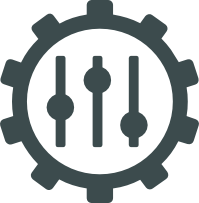
Simplifying processes ranging from job postings, candidate communication, collaboration with external recruitment agencies, reporting and tons more, an ATS helps your recruiters focus more on the quality of hiring versus merely chasing quantitative targets.
2) Promote your employer brand online:
Your hiring brand is your gateway to accessing the best candidates and building a brilliant first impression amongst audiences. Investing in an ATS that delivers a branded careers page as a one-stop window with simple job application procedures helps grow your candidate pipeline at an unparalleled speed.
Marketing you as a top employer, businesses with a track record of using content such as photo galleries, employee testimonials, company missions/vision, award and honours, and staff incentives are known to achieve high traffic careers pages.
3) Acquire talent anywhere, anytime:
With cell phones practically serving as an extension to human hands nowadays, having a mobile-friendly careers website helps target your always on-the-go talent segment via their devices. Meanwhile recruiters can use dedicated mobile apps to keep up with their pipelines.
4) Create and share shortlists with ease:
Using an ATS to capture CVs streamlines searching, sorting, organization and annotation with a longer lifetime value to keep your candidate databases buzzing with talent. Offering a diverse range of CV search filters, and the ability to retain context of conversations by adding notes etc., raking through your entire prospect database using criterias and keywords  of choice simply takes the click of a button (versus an army of recruiters).
of choice simply takes the click of a button (versus an army of recruiters).
5) Schedule Interviews without the back and forth:
Tired of the uphill battle? A well designed ATS allows hiring executives to select available time slots and dispatch personalized email invites to candidates. The preferred slot selected on-a-first-come, first-served basis by the recipient is then synced with the interviewer’s calendar alongside the CV and other related notes.
6) Recruit collaboratively in teams:
Rallying up your troops over email, spreadsheets, in a physical setting, or a call to discuss hiring is a mission easier said than done. An ATS provides much needed transparency with clearly assigned roles, allowing HR assets such as CVs, requisitions, jobs etc. to be managed without redundancy in actions if a candidate has been contacted in the past.
7) Make localization your focus
Easy to customize and set up according to your specific business needs, maintaining localization to match both language and region focused requirements is an area where the right ATS can work its usual wonders. For e.g. your ATS should have the ability to incorporate local legalities in offers using customized offer letters, and allow you to track how many expats you can hire if your region works with quotas via visa grant management modules, etc.
8) Improve HR processes by measuring effectiveness
Whether you want to discover top talent streams, capture a detailed understanding of your candidate pool, or identify the precise volume of applicants in various stages of your recruitment funnel- all metrics are a click away. This reporting and analytics convenience offered by an ATS is integral to remove bottlenecks that slow down hiring, because what gets measured, always get managed.
Learn the benefits of investing in an ATS in detail here, you’ll love the wins waiting to be unlocked.
Once you’ve decided to use an ATS to solve your recruitment woes, you’re onto the most crucial step: deciding which provider to partner with. There are a lot of factors that come into play here. Switching from paper/email/spreadsheets based recruitment to a software is a demanding task in itself. Even if you’re switching from one ATS to another, it’s no less challenging because both situations require your workforce to adjust to changes that are being introduced for the better.
Here are eight critical questions you should ask all the ATS providers that you are considering to get a clear view of which solution will both meet your talent acquisition needs and will provide for a smooth user transition for your workforce.
1) Can you be given a detailed product demo?
Request a thorough demonstration of the system’s interface and use of essential tools like:
– Managing roles and tasks
– Requisitioning and posting jobs
– Scheduling interviews
– Communicating with candidates
– Accessing performance and talent reports
Be sure to involve all key departments in this demo so that every potential user gets to learn the scope of the system and judge whether it meets expectations.
2) What kind of customization are possible?
One size doesn’t fit all. Perhaps your organization prefers an accelerated hiring cycle or requires multilingual capability. Since your organization is unique and hiring processes can change depending on so many factors, remember to ask your provider if they can devise a tailor-made system for you that can meet your requirements.
3) How long is their time to set up?
Ask how long it will take for the system to be fully implemented because knowing this duration can help you pace your preparation for the switch. This time should ideally be long enough for all stakeholders to backup data and receive basic training in the system’s use but quick enough for you to switch full-scale and maximize productivity.
4) Can you see some past executions?
Requesting the provider for their customer testimonials can give great insight into the product’s competence. They can help you check whether the system has historically solved similar issues to those that you are looking to eradicate. These stories can also act as a great window into the responsiveness and reliability of your provider’s service.
5) How configurable is the system?
Be sure to ask if the ATS is configurable to your needs. Where customization refers to specific changes they’ll have to make within the system to adapt it to your needs, configuration refers to the kind of options the system provides for you to change things as needed.
6) Who hosts it and how secure is it?
Hosting security is crucial to your portal’s success. Ask your ATS provider about the hosting company they work with and the precise security features they use (like RAID, Uptime, Secure Datacenter). Knowing this is important because after spending so much money on the portal, you need to be sure that your data is protected from frauds and viruses and your server is up and running all the time, even when there are many simultaneous visitors on the site.
7) Who owns the data?
With most of this data being extremely confidential, it’s critical to ask your provider offering cloud storage this: who owns this data? The contract detailing this is very important and there must be a clear distinction between the provider’s right to store and process the data and the ownership that is retained by you. Your business owns its data so confirm with your ATS provider that there is no ambiguity over this.
8) What kind of support is offered?
Technology is just one piece of it all. You will need ample help around the product too. Knowing whom to reach and how much to expect from your provider can be of great benefit. Make sure to ask questions like: Is there a Service Level Agreement (SLA)? If yes, what does it entail? Who will I reach out to when I have a problem and how quickly will it be resolved?
P.S. Our dedicated article on “8 Questions You Need To Ask Your ATS Provider” covers this crucial topic in more detail.
Not all ATS solutions are built the same, some come with a list of superior features than others, while some can still achieve the intended hiring outcomes without the bells and whistles.
Before deciding which ATS is your knight in shining armour, revisit the critical challenges your recruiters are experiencing, and refine your selection process with the following factors at the forefront of your research:
Step 1: Assess Company Size
To determine the right ATS for your organization, the first step is to identify the size of your company. Are you a small business (1-49 employees), SME (50-249 employees), or an enterprise (250+ employees)?
Step 2: Focus On Your Essential Functions
After assessing your scale of operations and workforce size, the next step is taking a deeper look into the functionalities that matter most to you as a business. For example:
– Multiple vacancies to fill
– Customized careers page
– Job and offer approvals
– Automated communications
– Candidate assessments & scorecards
– Advanced user settings
– Interview scheduling
– Collaboration with recruitment agencies
– Reporting and metrics
Depending upon the vendor that you feel more comfortable sealing the deal with, it’s ideal especially for growing companies to choose a solution that doesn’t charge by feature. For example, a small company at the moment might only be interested in selecting these functions as their core essentials for now: customized careers page, automated communications, interview scheduling and reporting/metrics.
However, within a year when they’re growing and start facing unanticipated needs such as multiple vacancies, or job and offer approvals,, they’ll end up having to dish out more than an “all-in-one” ATS provider.
Step 3: Determine Your Budget
For employers that are constrained in terms of budget, choosing an ATS based on pricing could be the most viable route to go. But there other areas of negotiation to check for as well to keep the pricing in the territory that works best for you. Discuss with your vendor how they can reprice the solution based on:
– Number of employees
– Number of users
– Number of hires
– Variations in service level
By sharing these dimensions with your shortlisted vendors, you can check to see which company is willing to provide you the best technology at the price that is a perfect fit for your financial positioning.
Step 4: Research Current Users
So you’ve done all the extra work determining your company size, usage needs, core features in need and budget availability- but choosing an ATS requires one extra step that we cannot emphasize enough. In a very crowded market, it’s instrumental to research and find customer reviews for the vendors ranking high on your radar.
By gaining validation and testimonials of great experiences on websites such as capterra or getapp, you can select commendable technology with added peace of mind knowing that there are users vouching for the vendor’s service standards.
Read more about selecting the right ATS for your company here: What ATS IS Right For You?
If you’re still on the fence about investing in an applicant tracking system, taking a closer look at its feature set will help understand the value it can add to your hiring processes. Different vendors will provide different functionalities at varying price points, but here are a few essentials that your ATS should ideally have as a part of its standard offering:
I) Engaging Talent: Candidate Sourcing
– Branded career portal: We’ve mentioned it before, and we’ll emphasize this again- attracting talent is a necessity when competing for top prospects. A fully customized careers page works hard to promote not your just employer brand, but also a great candidate experience by serving as a content hub that positions you as an amazing organization to work for.
Building influence and improving online visibility, job seekers are attracted to values, authenticity, and exciting work cultures. Capturing and sharing this via interactive videos, 360 degree views, picture galleries and other appealing content are just some of the steps businesses can take to impress their audiences and achieve a “wow” factor.
– Easy CV creation & parsing:
To ensure that prospects are not put being through exam like assessments, ensure that your ATS spearheads easy CV creation. By allowing quick CV parsing and even instant importing from profiles on professional networking platforms, employers benefit from swift data collection, meanwhile candidates can create user accounts to apply for multiple positions with ease without having to go through tedious data reentry.
Being able to parse CVs to match required keywords from the job description, recruiters can cut their screening time by more than half to ensure that they only pursue candidates with experience essential for the job role.
– Legal compliance:
All users have the right to know what data is being collected from them, and what is its intended use. This is why we your ATS should have all required measures in place to comply with key regulations such as GDPR.
With job seekers becoming increasingly cautious about their personal information, a data security driven hiring solution aids in putting both the employer’s and candidate’s mind at ease regarding data collection practices.
II) Streamlining Requisition Processes
With multiple positions to hire for, an ATS should add the convenience of creating and managing requisitions. Enabling your HR team to focus on exceptional hiring outcomes, having a hassle free vacancy approval framework in place removes recurring frustration linked with traditional hiring workflows.
From generating requisitions, assigning follow ups, confirming budget approval, and having all necessary stakeholders unanimously involved in the decision making- a streamlined requisition process should be a standard feature for employers to look forward to.
– Quick searchability:
Searching for requisitions should be a one click task. Your ATS should diligently provide an overview of your hiring pipeline based on filters such as hiring manager, status, location, division or job title to ease the workload of busy hiring managers.
Furthermore, added functionalities should include being able to cancel, pause and resume requisitions based on any changes in the business or financial environment.
– Automatic reminders:
By having the ATS take responsibility of sending out automatic reminders for pending tasks, approvals and authorizations, the HR team saves time once invested in micromanaging hiring every step of the way. Removing bottlenecks from communication, approval workflows are executed faster due to the higher level of transparency and accountability involved.
Bringing relief to organizations through reduced time-to-hire and a higher volume of requisitions processed, businesses can have their troublesome skill gaps eliminated in no time.
– Easy requisition tracking:
It’s important to revisit hiring activity from time to time, and take a closer look at what requisitions may be falling behind required progress milestones. Being able to access a full picture of each requisition ranging from creation to authorized users to pending approvals helps in conducting required status checks (alongside monitoring compliance and team efficiency).
III) Collaboration with Recruitment Agencies
Some organizations like to have their network of external recruiters assist them on their hiring missions. Your ATS should support this need, and allow CV submissions from outside recruitment agencies without a glitch.
– Dedicated interface:
Recruiters simply don’t have the time to moderate multiple inboxes. This is why your ATS should provide a dedicated interface allowing external recruiters to log in, add CVs using the CV builder/parser, and keep contributing towards your talent pool without a flood of emails going back and forth.
– Performance reports:
Monitoring agency performance is critical to maintain relationships that are of value, and cut others that are only serving as a burden on your budgets. By being able to compare agency activity, submissions, hiring volume, and other associated metrics, businesses can zoom in and strengthen ties with agencies working harder than others.
– Duplication detection:
With multiple headhunters working to find the best match for your vacancy, there’s a high possibility of duplicate profiles being generated. A well equipped ATS should be able to identify whether a candidate already exists in your database, and prevent agencies from submitting referrals that are already available in the talent pool.
– Privacy settings:
Your vendor should provide limitations to control the number of referrals per job, assign deadlines, limited access to candidate status in the hiring funnel, etc. Agency activity controls safeguard confidentiality and bring much needed focus on the quality of talent, versus merely quantity.
IV) Insightful Assessments
Assessing talent for their skills helps identify how effective are your prospects at doing their job. This is why your ATS must offer the right tools to evaluate your prospects, and test their proficiency resulting in more confident hiring decisions.
With hundreds of CVs being received for every vacancy you publish, your ATS needs to work smarter so that your recruiters don’t have to work harder to meet their hiring targets. This is why tools such as tests and questionnaires serve as objective exercises to determine if the candidate has the right competencies to proceed with the hiring process.
The ATS should provide the flexibility to choose from a database of standardized tests or create custom questionnaires to obtain information from candidates. Once the candidate is done, the report should be easily accessible by the required hiring team to collaborate and decide if they are satisfied with the prospect’s performance.
– Candidate scorecards:
As your applicant pool starts to grow, you’ll soon realize that there are several equally qualified candidates applying for the job. Candidate scorecards basically simplifies talent shortlisting by empowering employers with a tool allowing them to set custom evaluation criteria, incorporate questions with various answer formats (MCQs, rating scales, text answers), and assign weights to questions to determine scoring.
Making hiring decisions free of biases, this feature enables recruiters to compare candidates against the scores of these assessments. Consequently, applicants with a poor score are disqualified and cannot move forward in the hiring funnel.
V) Efficient Interview Management
A recurring challenge faced by hiring managers involves the struggle of keeping track of interviews, and better managing their availability. Your ATS should address this pain point and take out the guesswork from hectic calendars usually prone to errors and conflicts.
– Calendar syncing:
Your new hiring technology should allow interviewers to sync their Outlook calendar with the ATS’s interviews calendar to have all appointments, meetings and interviews saved in one place. Removing the obstacle of having to shuffle through different tabs, having all of the day’s commitments one quick glance away will eliminate the menacing scheduling chaos. 
– Avoid scheduling conflicts:
The ATS should only allow one interview time slot to be booked at a time. Interviewers can invite their shortlisted candidates to book the time that works best on their shared calendar, and a first-come-first-serve time slot picker will ensure no duplicate bookings. Say adios to the days of frazzled calendar management.
– Easy cancellation:
From personal emergencies to finding unexpected exceptional talent that’s a perfect fit, cancelling a specific time slot for an interview that was scheduled with a candidate can become a necessity for recruiters. Your vendor should deliver flexibility to promptly alert the prospects about the change in plans by triggering an email notification informing them of the canceled interview.
VI) Supercharged HR Productivity
Improving candidate communication quality so that every exchange leaves your talent pool impressed is always an employer’s dream. By using automation to your advantage, you can look forward to effortless customized emails powered by automated workflows so that your hiring managers can experience improved productivity and convenience.
– Smart automation:
Recruiters and candidate communications have traditionally shared a rocky relationship, until the right ATS selection came to their rescue. Instead of manually typing out emails and sending them out one recipient at a time, this hiring software solution saves email templates and provides automatically triggered mass messages to go out based on the candidates’ stage in the hiring funnel.
Taking away the stress of slow communication and redundant emails, the hiring pace goes up, and engaging the top prospects becomes significantly easier. Intelligent and thoughtful messages ensure candidates are not left bitter or frustrated with no insights on their application, (in return painting a poor picture of the time and the resources the company has access to for their hiring missions).
– Onsite mailbox:
No one wants to start their day with a flood of emails. This is why choosing the appropriate ATS solution will provide an independent on-site storage of all correspondence to help manage and track messaging, in addition to keep your recruiters’ inbox organized without unnecessary distractions.
– Offer letters:
The perks of automated correspondence don’t end here, making offers to your winning candidate is also effortless with an ATS. Employers can swiftly gather all approvals, create and send job offer letters to get their favorite candidates ready for their roles. Eliminating any paperwork scanning, printing and dispatching, recipients can submit immediate offer acceptance leading to brilliantly reduced time-to-hire.
VII) Reporting & Metrics To Optimize Recruitment
Tracking productivity helps organizations assess the impact of their hiring activity. A smart ATS will take away the guesswork from your reporting procedures using a multi-layered approach. Identifying new hiring activity and supporting data-driven performance management, employers can look forward to consistently improving the outcomes from all their recruitment initiatives.
– Recruiter reports:
Digging deep into insights linked to talent, prospects, top candidate sources, and bottlenecks, businesses can take better control of their hiring processes. From identifying recruiters with highest activity, volume of vacancies filled, and overall initiatives taken to acquire best talent, employers can reward the efforts of their existing top resources.
Moreover, reports presenting talent breakdowns based on a vast combination of filters help gain an overview of your applicant database simply at a glance.
An ATS monitors and tracks the time spent by each candidate in the funnel, their status, and associated obstacles coming in way of a decision being reached regarding their application. Gaining access to key metrics including time-to-fill, time-to-hire, interviews per hire and more, companies can gain an edge and take preventative measures required to drive best talent to the business.
VIII) Ease of Shortlisting
Gone are the days of manual CV shortlisting, unnecessary paper wastage, and inefficient speed of talent acquisition. Staying ahead of competition requires fast hiring, and accelerated decision-making- milestones that a powerful ATS can help secure in a jiffy.
– Quick search filters:
Speeding up time-to-hire without compromising on the quality of talent is a dream that your ATS can fast turn into a reality. Helpful CV search tools allow recruiters to scan through the entire database based on a wide range of filters such as job title. location, qualification, work experience and more. Moreover, keyword based searches also help shortlist talent in record time.
A task that once used to take weeks is now accomplished in under a minute; that’s the impressive capability of technology to produce results in real-time. Don’t forget to save your search if needed, the backbone of awesome productivity is removing task repetition afterall.
– Tags:
Reaching your hiring targets becomes easier with CV tags. When your recruiters are searching for talent based on preferred criteria and see a profile they’d like to segment as special, adding a tag title to use for your future searches is a huge time saver.
Allowing profiles to get tagged at lightning fast speed with further conveniences such as auto-suggestion lists, recruiters can even add a visual spark by adding colored borders reflecting relevance such as red for rejected, yellow for shortlisted, etc.
IX) Mobile Friendly Recruitment
The vendor you choose as your ATS provider should help your hiring team keep up with work on-the-go to acquire top talent with added speed and performance efficiencies.
Enabling recruiters to manage timelines seamlessly, and enjoy a VIP experience with your talent pool, workflows and key hiring actions- the ATS’s mobile-app should address fundamental functionalities including:
– Candidate recruitment:
Recruiters should be able to swiftly search through your candidate pool using preferred criterias and keywords, view CVs, and instantly engage with top talent using the contact details 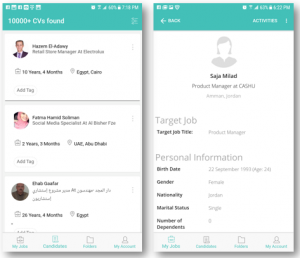 in the app.
in the app.
– Manage talent pipelines:
Labeling favorite prospects with tags and notes for easy searchability, and add profiles to folders to ensure amazing organization is a vital capability to have at your disposal.
Users should also be able to create folders to better categorize CVs and prioritize candidates of interest, in addition to collaborating with their teams and decision makers by sharing them.
– Track your applicant activities:
Staying up-to-date with hiring progress is important. The app should provide details of applicant’s activities including current status in the recruitment funnel, and keep the funnel activity in motion by progressing candidates to appropriate stages of your hiring cycle.
– Manage job posts:
Your recruiters should be able to keep all target audience updated with current vacancies. Access to active and inactive jobs along with their associated details, viewing applicants, and even job activation/deactivation privileges through the app are functionalities handy to have have.
Change may be the only constant in life, however that doesn’t always translate into users being excited to see it happen at their workplace. Despite the thorough brainstorming done by companies, it is only natural that there are predictable pain points to be addressed when adopting new technology.
With the right game plan, ATS implementation is a milestone you’ll get past in no time. And as always, we’re here to help prepare.
Challenge 1: User Acceptance
Used to conventional hiring practices and workflows, your staff is the first point of focus that surfaces as a challenge when investing in an ATS. Whether accustomed to spreadsheets  or manual folders, helping your employees break free from dated procedures takes priority to ensure successful implementation.
or manual folders, helping your employees break free from dated procedures takes priority to ensure successful implementation.
Fortunately gearing up to overcome this bottleneck is simple- take all steps necessary to ensure that your users understand the technology, its convenience, and how it will make their workload less daunting. To fulfill this objective, consider your ATS provider as a new best friend- one that is willing to hold trainings, provide instruction manuals, and ensure exemplary user support.
The more questions your hiring team can get answers for, the higher the likelihood of them being won over by the quick, easy and intuitive perks of the recruitment transformation happening around them.
Challenge 2: Issues with integration
For companies with existing hiring systems in place, integrating the ATS to ensure hassle free meshing of the talent databases, communications, and associated candidate documents is pivotal to not lose out on any hiring progress made so far.
Achieving this synergy is yet again a goal that you and your ATS provider need to collaborate on so that your expectations are crystal clear from the get go. This is another reason why detailed research to identify the most credible vendors with the best testimonials (check websites such as Capterra) can help drive precise integration from start to finish.
Challenge 3: Don’t abandon employer branding efforts
An ATS carries undeniable benefits to tap into, but that doesn’t mean that organizations can put their employer branding efforts on the back burner.
Being able to reach out to a global audience and building an envy worthy talent pipeline that your new hiring solution can help sort, manage and track depends strongly on your employer branding initiatives. Whether you choose to go social, hold recruitment drives, host coffee socials at your office, or make your careers website a content powerhouse- there’s ample reason why 7 out of 10 MENA respondents link employer branding with ease of attracting job seekers.

Challenge 4: Making hiring mobile friendly
Speaking of employer branding, we’re living in the age of all things mobile focused. Your new hiring technology should support mobile; this is a nonnegotiable edge to ensure that your candidate pool hits the right ROI targets, and helps talent find you on the device that they best rely on to search for jobs. In fact, a recent study concluded that 89% of job seekers think mobile devices play a critical role while job hunting.
Ready to gear up? Read our detailed article to get a head start on implementing Applicant Tracking without worrying about unexpected surprises.
One of the biggest downsides of using online job applications is the process’s inability to highlight a candidate’s soft skills. Most automated recruitment solutions excel at gauging how solid an applicant’s academic background and work experience is. Others utilize both standardized and customized tests to measure their technical prowess. Amidst all the quantification that is part of the candidate evaluation process, it’s easy to let other less-quantifiable yet equally important aspects fall through the cracks.
For instance, with an ATS, it’s easy to tell if a certain applicant has the right skill level and background to be a product manager but the uni-lateral application process leaves little room to figure out if the applicant will be able to manage a team. This inability to hire for soft skills creates problems later on when an applicant lacks the critical soft skills required for a job only because they could not have been assessed through the regular online recruitment process.
Not all hope is lost though, because there are a few tricks you can use with a competent ATS to hire applicants with the soft skills that your job requires.
1) Create Relevant Job Ads
Instead of only listing your technical requirements, make sure your job ads include required soft skills in the job description. This will help set the stage of your expectations from applicants from the very start.
2) Use Open-Ended Questions
Asking candidates situational questions right within the application process can be a great way to assess their strengths and weaknesses.
3) Use Personality Tests
Use standardized personality assessments like the MBTI embedded in your ATS to gain insight into applicants’ personalities.
4) Schedule Quick Interviews
Get to know your candidates better by quick interviews through your ATS’s interview scheduling feature. No matter how interactive your recruitment process is, sometimes the best way to measure an applicant’s personality is to talk to them straight up.
5) Tag Profiles with Attributes
Through your ATS, annotate on CVs by adding tags and labels like ‘Culture Fit’ & ‘Great Orator’ to organize talent profiles by soft skills. You can also search for these tags later on to shortlist candidates that were tagged with a particular soft skill.
6) Automate Reference Checking
Use automated reference checking to ascertain whether your candidate has the right soft skills for the job by checking with their precious mentors and peers.
Don’t forget to check out our handy dandy infographic to help you Hire For Soft Skills With An ATS here.
Hiring trends in MENA are always evolving, every year there’s a new bigger and better solution for recruiters to steer improvement in talent acquisition. The current talk of the town is video interviewing technology; with an estimated 7 in 10 HR managers now using video to interview candidates.
It’s impressive role in filling vacancies with precision has become impossible to deny making it a trend worth digging deeper into to see how your organization too can benefit from this game changer:
1) Save your time & money:
Time effective, efficient yet insightful, recruiters can assess candidate enthusiasm and competency without adding to their costs, conduct pre-hire assessments, and deliver a compelling candidate experience. Allowing hiring managers to truly get to know their prospects on a deeper level versus a phone conversation or a CV based screening, selecting talent with the best potential for job success is no longer the cumbersome exercise it once was.
2) Collaborate seamlessly:
Video interviewing makes collaboration for teams less frustrating, and more results-driven. With approximately 80% of employee turnover linked to faults in the hiring process, video recordings available for viewing at the time most convenient for key decision makers helps them zoom-in better on core attributes without distractions.
in the hiring process, video recordings available for viewing at the time most convenient for key decision makers helps them zoom-in better on core attributes without distractions.
3) Ease of accessibility for all:
Recruiters tend to find themselves in a tough spot with limited talent availability in their local territories to choose from. Reducing discrimination amongst varying geographical, gender and even differently abled segments- the accessibility this technology is adding to hiring is a refreshing change for job seekers and recruiters alike.
4) Impress your prospects:
Interviews are a two-way street; as interested as you are in your candidates leaving you impressed, your talent expects the same from your organization.
By jazzing up your recruitment style with video interviewing, you can look forward to making a great first impression, and making your mark as a dynamic, and applicant-friendly business. Enabling after-hours interviewing, your prospects will be pleased by your flexibility as an employer into making career progression more convenient for your candidates to pursue.
5) Adding consistency to your interviewing:
 Video interviewing has been welcomed as a source of relief to standardize the interviewing experience, meanwhile adding ease of performance tracking. By being able to identify commonalities amongst top prospects, their qualifications and potential, recruiters can make more well-informed decisions without falling victim to the bias of a bad day.
Video interviewing has been welcomed as a source of relief to standardize the interviewing experience, meanwhile adding ease of performance tracking. By being able to identify commonalities amongst top prospects, their qualifications and potential, recruiters can make more well-informed decisions without falling victim to the bias of a bad day.
6) Observe body language:
Body language plays a large role in indicating candidate’s comfort with communication- their facial expression, poise under stress, etc can help determine their future as a good cultural fit. This is another area of recruitment that video interviewing helps improve; a candidate that is comfortable and presentable during a screening has a higher chance of being able to hold memorable conversations in-person as well.
7) AI Improvements:
With the developments in across the AI (Artificial Intelligence) domain, video interviewing is here to stay as the future of interviewing. Based on facial expressions alone, AI will allow hiring managers to be able to assess the credibility of answers, candidate honesty, and overall capture their mood to share insights on how well they perform under pressure.
Got some more time? Our article on how Video Interviewing is transforming recruitment for companies is a great read.
As an employer, you’ve probably already heard about the advantages of integrating employee onboarding with your ATS. So what is employee onboarding exactly? It is having all the necessary resources in place to ensure your new employees can transition into productivity mode upon joining your company without delay.
From having the required documentation ready to ensuring availability of technology assets, having a well thought out employee onboarding strategy is a mandatory step to support new hires in adjusting to the workplace with ease. Whether social or performance-based aspects, being empowered with the knowledge and tools to optimally function with an organization is a mutual win for both the employer and employee.
Fortunately, this is where employee onboarding integration with an ATS provider does the heavy lifting for you, providing employers with many rewards that make it worth the investment, read on to find out how.
1) Assured Compliance:
Maintaining adherence to the organization’s policies and procedures is the backbone of any successful business. Different employers have different areas of focus, thus onboarding ensures ease of knowledge sharing relevant to safety regulations, confidentiality clauses, code of conduct and reporting hierarchies so that new employees have a clear understanding of do’s and don’ts of workplace behavior and overall expectations.
2) Robust Engagement:

Studies have concluded that 76% of employees that feel undervalued end up switching jobs in search of a more fulfilling opportunity with higher levels of connection, involvement and acknowledgement. Make sure your newcomers bloom into top performers; customized communication highlighting major responsibilities, tentative work week agendas, tech tools to use, and new joiner announcements are just a few of the elements to check off your onboarding list to ensure that you extend the warmest of welcomes to new hires.
3) Cost Savings:
Well planned onboarding and ATS integration are directly linked to cost savings. A sincerely invested workforce will have a higher incentive to work hard and perform to the best of their abilities.
The result? Money saved that would otherwise be spent searching for replacement talent and incurring loss of productivity.
4) Reduced Training Costs:
Many employers are now relying on video tutorials and content to help their new hires get ahead of the learning curve. Instead of bringing in coaches, arranging travel/lodging, and incurring huge costs to facilitate knowledge sharing, the right onboarding solution can help slash these expenses significantly.
Not sure if this matters to your company? Recent research states that businesses can experience a loss of almost 60% of their workforce over a span of 4 years when investment in training is not a staple objective.
5) Exceptional performance:
Research on employee onboarding led to not so surprising outcomes highlighting higher performance levels. Newcomers that were effectively integrated into the organization were not just a better cultural fit, exhibited better teamwork, but also demonstrated a stronger understanding of the level of excellence expected from their work.
Read all about using Employee Onboarding to complement your ATS here.
Ready to build stronger influence than your competitors have to offer? Let’s get started:
1) Build your online visibility:
Job seekers today are known for their high levels of global exposure and tech savvy ways. With mobile usage growing at an astoundingly rapid rate, it is easy to see why this audience strongly connected to their smartphones and engaging content needs to be attracted using channels best aligned with their lifestyle choices- i.e. the web.
Highly invested in being able to find information at the click of a button, this is precisely why businesses need to go the extra mile to achieve easily searchable websites, career pages and even social media presence.
2) Using an ATS to streamline hiring:
Almost 94% of recruiters and hiring managers using applicant tracking systems express their satisfaction with the technology. Giving recruitment a refreshing overhaul, the value this hiring solution adds to organizations regardless of size, budget and industry type is impossible to deny.
From dramatically cutting down candidate shortlisting time, incorporating assessments, enabling collaboration, automating communications, and giving employer brands a much-needed boost- there’s practically no reason an ATS should not be your top ally in 2019.
P.S Don’t forget to revisit your employee onboarding process as well.
3) Revamp your candidate experience:
Job seekers value their time and open flow of communication; shorter hiring timelines, regular emails, and focus on building credibility are just a few of the promising signs that these individuals seek.
Companies that are proactive with clear job descriptions, automated emails confirming status in the recruitment funnel, and specific deadlines by which hiring will be completed are great transparency advocates. The efforts do not end here though- ensuring fair interviews, sharing constructive feedback, and setting performance probation goals are essential to keep your future employees motivated and excited about building their future at your company.
4) Video interviewing:
With leading companies such as Google and Amazon too jumping on the bandwagon, a recent survey of 506 companies led to results concluding that 47% of companies use video interviewing to shorten their time-to-hire.
Allowing candidates to interview from home simply via their mobile/desktop devices and an internet connection, job seekers or HR executives no longer have to schedule their day around an interview. Saving time and safeguarding productivity, screening remote candidates has become easier than ever, meanwhile allowing talent to showcase their skills from a less stressful setting.
5) Build flexibility into your HR policies:
An increasing volume of job seekers wants to be assigned deadlines and be equipped with the resources to execute their tasks effectively. However, when they do it and where they do it from is an area where they want to exercise their own decision-making skills.
Not exactly an unreasonable demand, recent studies have proven that by making their offices go “virtual”, employees demonstrate not just higher loyalty but also better engagement. It is clear why 79% of respondents stated that they would prefer working for a company with ‘remote work’ options in MENA alone.
Interested in learning more hiring trends insights for 2019? Read more here.








